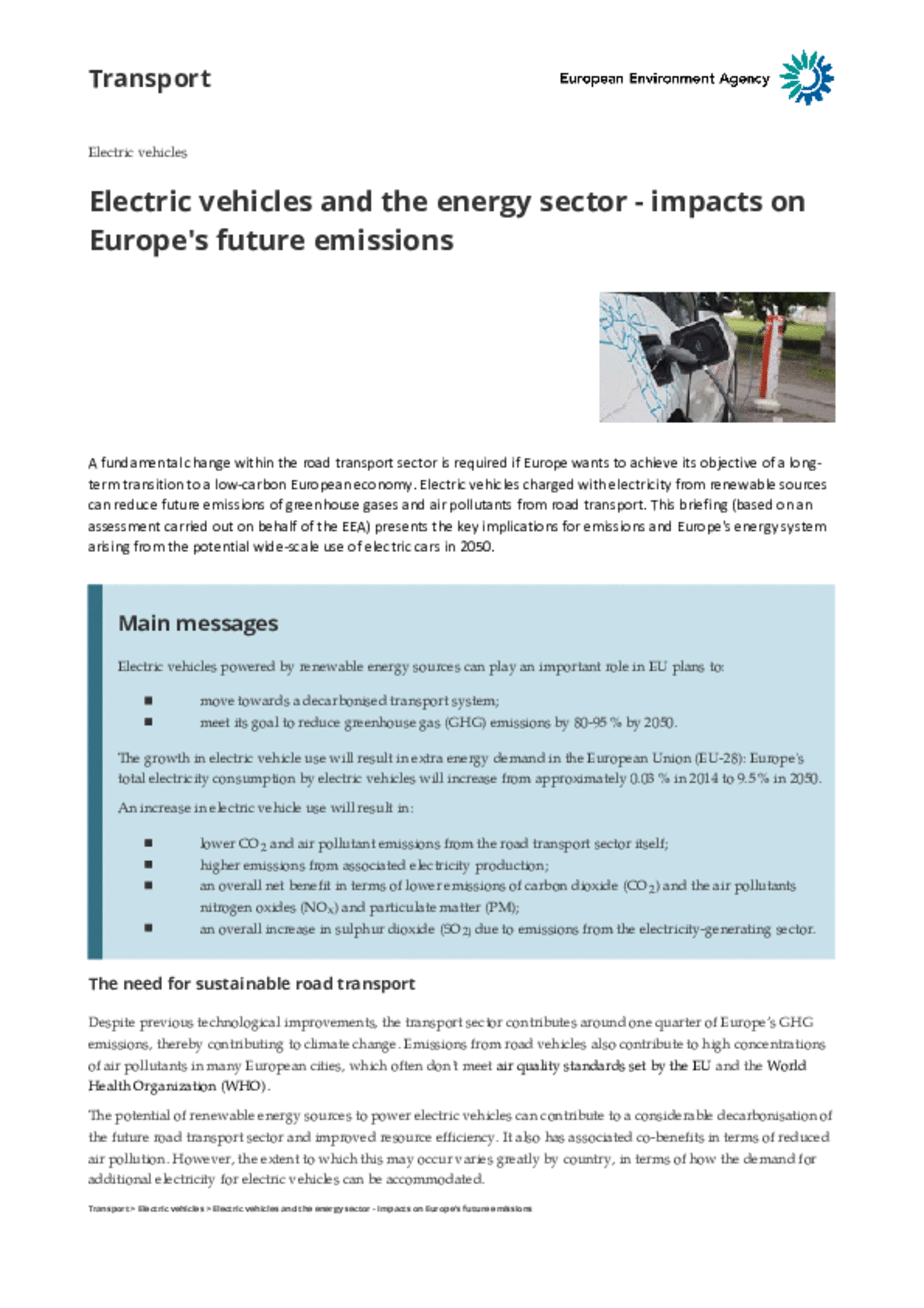All official European Union website addresses are in the europa.eu domain.
See all EU institutions and bodiesBriefing 2/2016
A fundamental change within the road transport sector is required if Europe wants to achieve its objective of a long-term transition to a low-carbon European economy. Electric vehicles charged with electricity from renewable sources can reduce future emissions of greenhouse gases and air pollutants from road transport. This briefing (based on an assessment carried out on behalf of the EEA) presents the key implications for emissions and Europe's energy system arising from the potential wide-scale use of electric cars in 2050.

